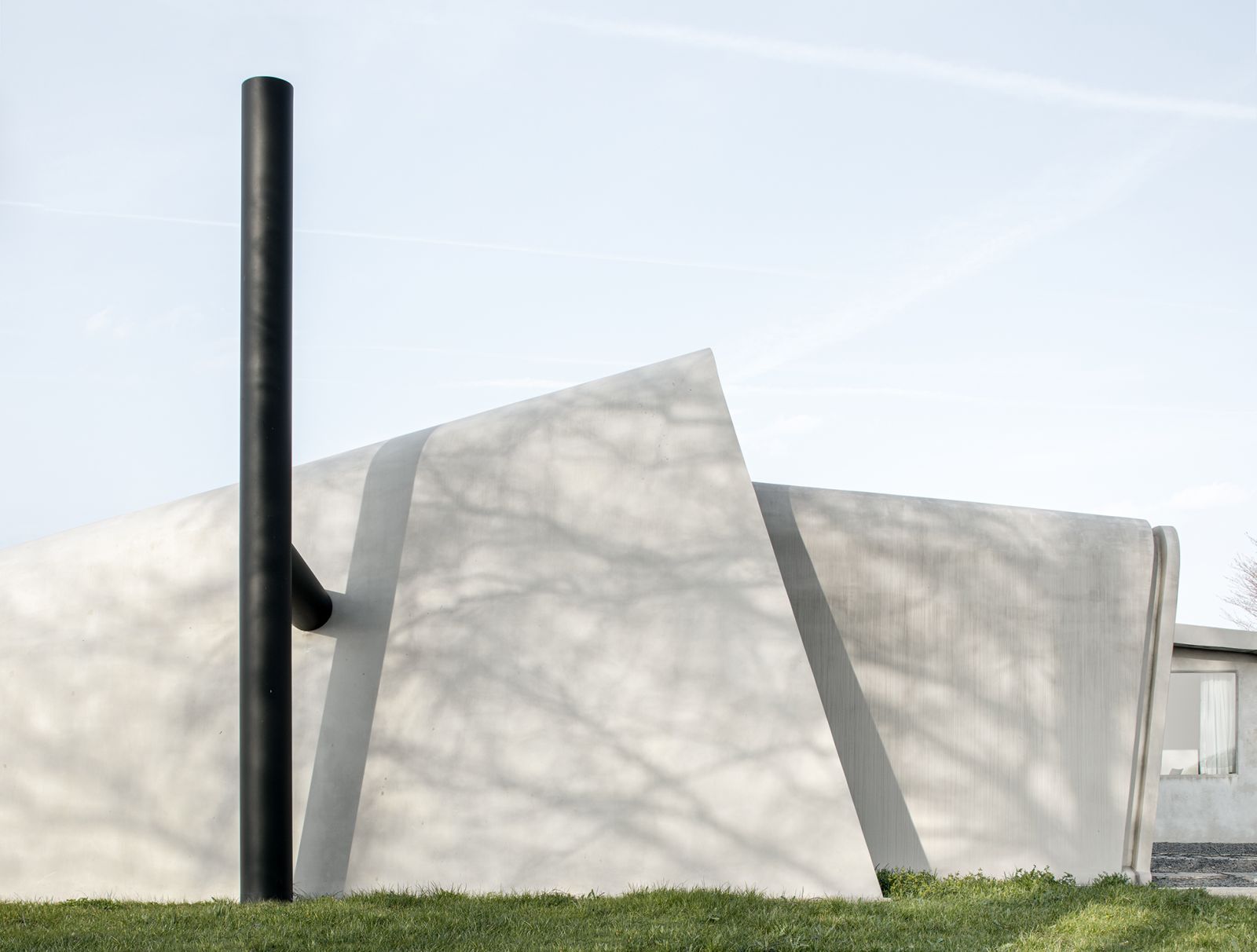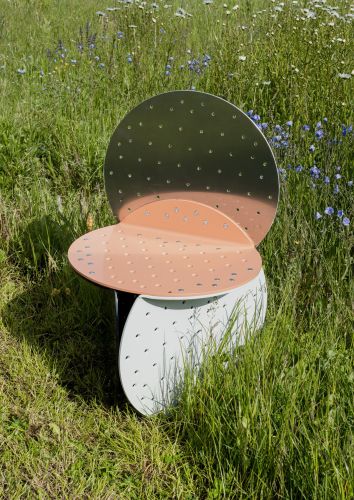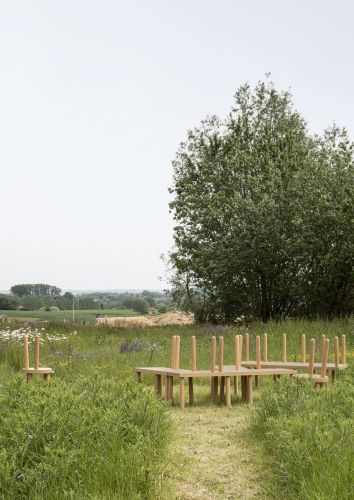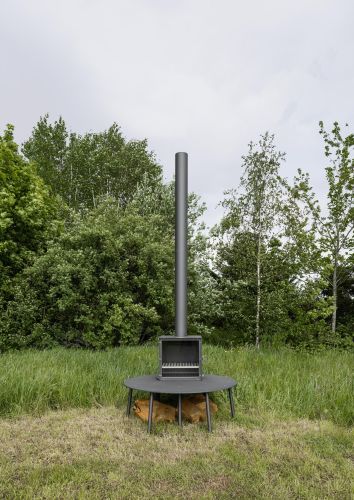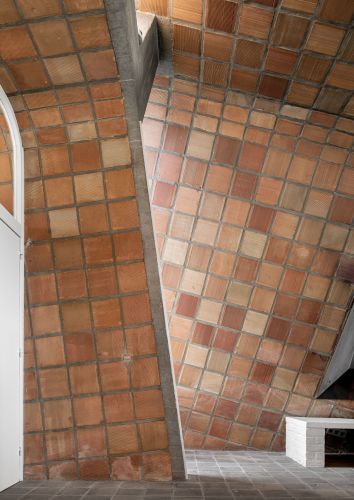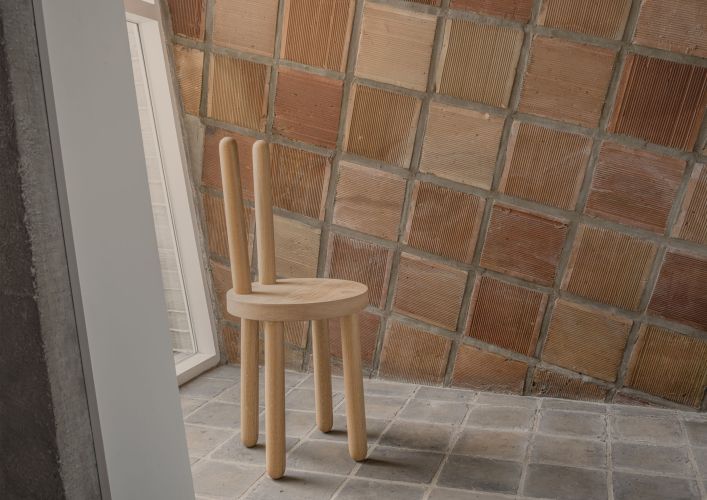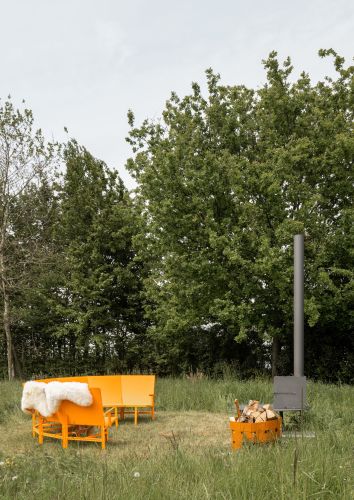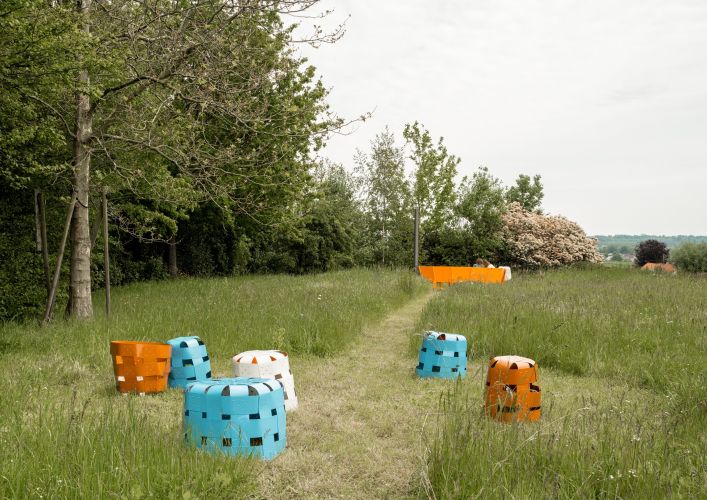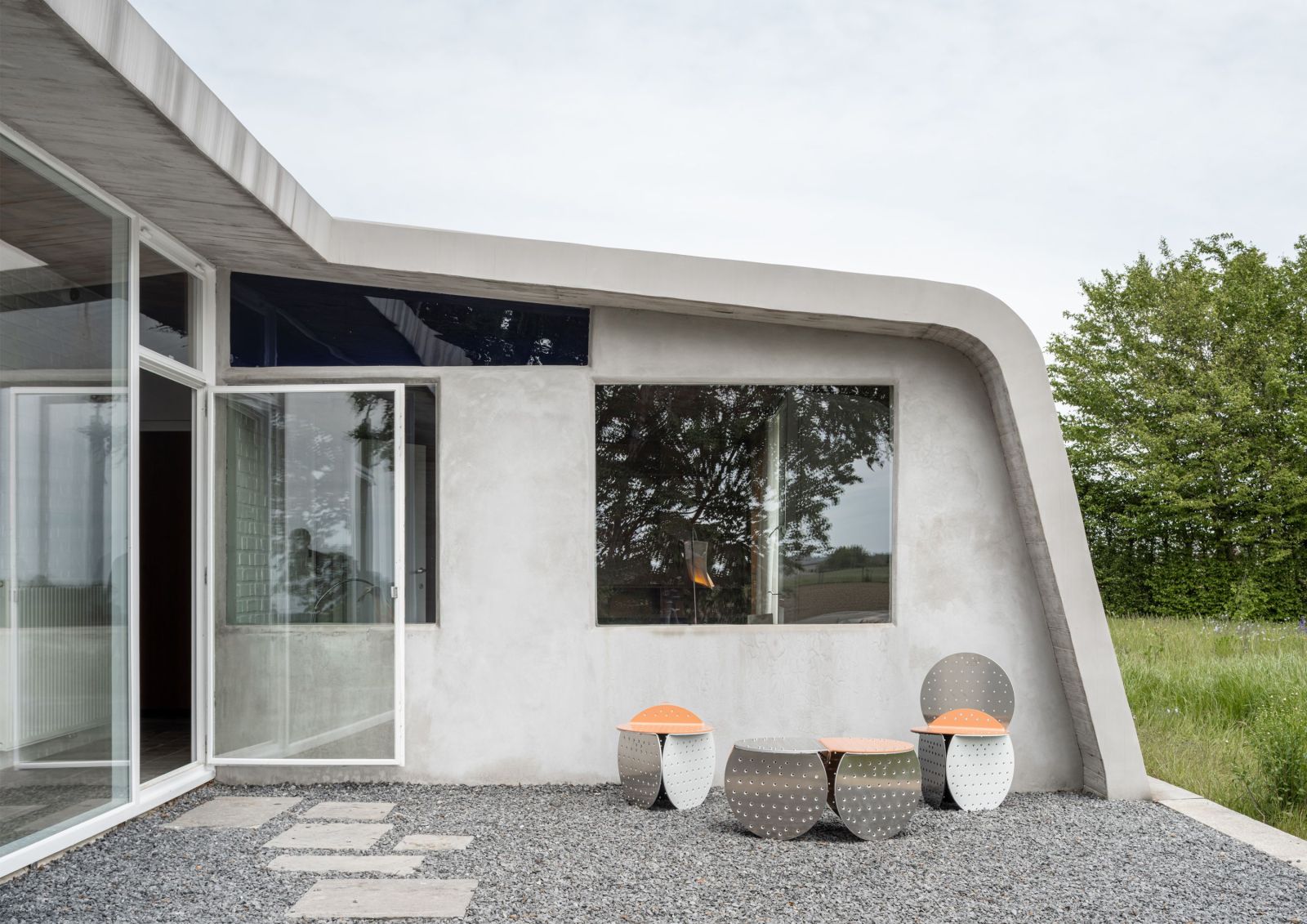In the early sixties of the last century, the famous Belgian novelist Maurice Roelants decided he wanted to build a new home in his beloved Pajottenland, the region southwest of Brussels. He picked the perfect location on top of the Tomberg, overlooking the surrounding hills. After considering Henry van de Velde, figurehead of early Belgian Modernism, he selected the young socialist utopist Willy van der Meeren, as the future designer of House Roelants. The writer wanted his new house to reflect Le Corbusier’s sculptural take on Modernism. This was reflected in Van der Meeren’s where he drew inspiration from a visit to Le Corbu’s Philips Pavillion at the Brussels Expo 1958. The architect felt no restraint measuring up to Roelants’ wishes, while unfolding his own plans. Nestled in the terrain sits the simple rectangular volume of a garage at street level, from where a winding path leads up to the main building; a construction of two concrete slabs shouldering the hilltop, enveloped by the flourishing meadows, shrubs and beech.
The maniera way
Garden furniture
During Collectible 2021, Maniera Gallery tastefully matched a new collection of garden furniture by New York based Studio MOS, to the elegant simplicity of ‘House Roelants’, designed by Modernist master Willy van der Meeren in 1962.
Brutal economy
Since its founding in 2014, Maniera Gallery has provided opportunities for inventive minds in the realms of architecture, design, arts and crafts. The presentations we saw during earlier editions of Collectible were in a class of their own. This year the festival presented in various locations in - and around Brussels. Maniera was lucky enough to find a setting of great architectural merit, fitting the premiere of new outdoors furniture designed by New York based Studio MOS. The architecture studio run by Michael Meredith and Hilary Sample took the chair, or seating, as the main focus for their explorations. Furniture design has long been a part of MOS’ practice. For the new designs, spread over the pastoral fields of House Roelants, they based their investigations on the most puritan American approach towards furniture design. They turned to Shaker furniture as the prime example of ‘the brutal economy of scale’ in response to the contemporary havoc caused by the pandemic and unrest surrounding the 2020 elections in the USA.
The Shakers were nineteenth century America’s largest and most well -known religious utopian society. Today only a handful of the sect still live in their traditional homes in Portland and Maine. Their legacy is long and the refined simplicity of their wooden houses and furniture has impressed generations of modern designers. MOS’s design is also motivated by the exceptional craftmanship of the Shaker objects, especially the baskets that were a staple, made with an open hexagonal weave and sturdy enough to be used to harvest fruit or drain cheese curds. With its utility and stripped down yet elegant form, Baskets No. 1-3 exemplify the elements of the designs and supporting function of the pieces. The bolts that punctuate them hold the strips together and are the only decoration, apart from the bold colors adorning these objects. Available in a range of sizes and scales the basket-stools can seat one or two people side by side. Rather than wood, the archetypical Shaker material, MOS’s baskets are made from a latticework of metalstrips.
Travelling show
The love for great architectural spaces, designed with great care from a roof to a door handle, has always been the heart and soul of Maniera’s presentations since the inception of the gallery. Between 2015 and 2020 owners Amaryllis Jacobs and Kwinten Lavigne not only worked as curators, but also as co-producers compiling a unique portfolio of furniture objects, mostly designed by architects. Their love of architecture allowed them to find magnificent houses in Brussels and Flanders, using them to present collections in dialogue with the architecture. The bourgeois Wolfers house, backdrop to Maniera 3, marked the shift from Art Déco to Modernism by Henry van de Velde in 1930. The Wassenhoeve House built by Belgian architect Juliaan Lampens in the seventies demonstrates a love for open space that subsequently fitted the décor of the Maniera 7 exhibition. To some extent the free zone Maniera offers, provides architects and artists the possibility of a Gesammtkunstwerk as a composition involving several disciplines within one overall show.
Maniera Gallery
Place de la Justice 27 – 28
1000 Brussels
maniera.be
